The Frey Pottery: The Forgotten History Of An American Red Earthenware Manufacturer
A Closer Look At Colorful American Art Pottery
By Justin W. Thomas - October 21, 2022
Spanning from the 1870s through the 1950s, the evolution of American art pottery was associated with three different movements: 1) The Arts and Crafts Period, 1880-1910; 2) The Art Nouveau Period, 1890-1910; 3) The Art Deco Period, 1920s. These movements drew inspiration from a variety of resources, such as the 1876 Centennial Exhibition in Philadelphia, which was a catalyst for the art pottery movement in the late 1870s and the early 1880s. American potters were inspired by ceramic displays from Great Britain, France and the Far East, and they were introduced to new forms, techniques and glazes. Overall, art pottery was produced by over 200 studios and factories in America, although most were forced out of business due to cheaper mass-produced wares made in the late 1800s and early 1900s, World War I and the Great Depression in the 1930s. The forms associated with this movement range from tall vases to tiles, and the works featured original designs, simple shapes, and experimental glazes and painting techniques. This movement was prominent with potters throughout America, especially early on in places like Massachusetts and Ohio. These types of wares were even exported all over the country. But not every American art potter is well documented today, whereas the history of some of these businesses have been somewhat forgotten through the years, which includes wares occasionally found in the antique trade today impressed on the base, Frey. The identity of this company has been a source of interpretation through the years, including associating production with red earthenware made by the Frey family in Pennsylvania, while there has even been a theory that these wares were made in France. I have even heard that these objects were made just outside of New York City in New Jersey. Furthermore, the Frey familys production began around 1810, when Henry Frey moved onto his father-in-laws farm in a rural area of Washington Township, Pa. After Frey died in 1821, the farm was divided among his four sons. The pottery continued to be run by his sons, Henry Jr. and George, and during this period the area was renamed Freytown. After Henry Jr.s death, George Frey maintained the pottery until his death in 1846. The Frey Pottery The artware made from red earthenware marked Frey obviously dates from the 1900s, so there is no direct relationship to the wares made in Freytown before 1846. There is also no evidence in any of the local museums that suggest these wares were made in the area. However, these wares are certainly American made and should receive much more attention today, especially in consideration of the historical context that they were made during the American art pottery movement. The known forms include jars, vases, pitchers, banks and lamps. The glazes are usually extremely colorful and often just as impressive as some of the best glazes produced in America in the 1900s. Some of the pottery is also marked on the base with a number, which may be related to production or a reference to how many objects were made during a specific kiln firing, although it is possible the numbers may be related to a specific form, where other American art potters used numbers marked on the base that relate to an exact form in a company catalog. Among what can be considered the most prized glazes are the few known objects entirely decorated in cobalt, such as a large, handled jar owned by the American Folk Art Museum in Manhattan, N.Y., that was gifted to the museum by Maryann and Raymond Warakomski. In fact, the mere use of cobalt on red earthenware is extremely rare. But the only evidence that I have found that may identify the origin of this pottery business is an advertisement published in the Nov. 26, 1926, issue of the of the Evening Star in Washington, D.C., for Woodward & Lothrops Department Store. Woodward & Lothrop was a store chain headquartered in Washington, D.C., that began as the capitals first department store in 1887. Woodies, as it was often nicknamed, maintained stores in the Midatlantic region. Its flagship store was a fixture of Washington, D.C.s, downtown shopping district, competing with Garfinckels and acquiring Palais Royal. The chain filed for bankruptcy in January 1994 and completed liquidation in November 1995, with most locations sold to either J.C. Penney or May Department Stores Company. The advertisement includes a section describing lamp bases made at the Vic Frey Pottery, which ranged in price from $8 to $25 each. It includes an illustration of a lamp that is similar in shape to some existing lamps marked FREY. The lamp bases were described as Infinitely beautiful hand-made Vic Frey Pottery lamp bases - each individual in design and coloring. Interestingly, Vic Freys products were advertised beside Fulper Art Pottery, among other high-end products. The company that became Fulper Pottery was established in 1814 in Flemington, N.J., by Samuel Hill (1793-1858), a potter originally from New Brunswick, N.J. He manufactured a variety of utilitarian shapes and drainpipe from the local red earthenware clay. However, when Hill died in 1858, Abraham Fulper (1815-81) began purchasing the pottery from the estate, and by the 1860s, the company was known as the Fulper Pottery. According to the book, Woodward and Lothrop: A Store Worthy of the Nations Capital, Affectionately called Woodies by local Washingtonians, the beloved department store Woodward and Lothrop stood at the heart of downtown for over a century. Crowds flocked to the flagship store on the F Street shopping corridor to find better service and the seasons fashions. The store and its employees shared in the best moments in the lives of Washingtonians, from the elaborate holiday window displays to the Wedding Service department that helped countless brides choose their China patterns. For weary shoppers, the Bake Shop and seventh-floor Tea Room offered city favorites such as Wellesley Fudge Cupcakes and Chicken Pot Pie. Additionally, there is a red earthenware pitcher displayed at the Metropolitan Museum of Art in Manhattan, N.Y., that may have been made at the Frey Pottery, although it lacks specific information about its production, other than described as being made in Pennsylvania. However, the pitcher was gifted to the museum by Robert Macauley Jackson in 1920. A related pitcher is owned by Historic Deerfield in Massachusetts as part of the William T. Brandon Memorial Collection of American Redware and Ceramics. Nevertheless, the Frey Pottery of the 1900s may have been a short-lived enterprise, and that is why so little is known about the company today, although it appears that lamps account for many of the objects in existence. These wares are relatively rare to find today, even though during the time they were produced the company must have had a significant output. This may have also been a short-lived business venture that did not find a great amount of success because of the circumstances of the American economy caused by WWI and eventually the Great Depression. In some ways I also want to compare this production to Pennsylvania red earthenware made in the 1900s by Jacob Medinger (1857-1932) and the Stahl family, whereas these hand-thrown wares marked Frey are accomplished and should be held in high regard today, especially because of the aesthetically accomplished glazes that were produced. Photos courtesy of author, unless noted. Sources: Frelinghuysen, Alice Cooney, Martin Eidelberg, and Adrienne Spinozzi. American Art Pottery: The Robert A. Ellison Jr. Collection. Metropolitan Museum of Art, 2018. Lisicky, Michael. Woodward and Lothrop: A Store Worthy of the Nations Capital. The History Press, 2013. Hollander, Stacy C. Blue. Folk Art: Magazine of the American Folk Art Museum, Fall 2004, 38-47.

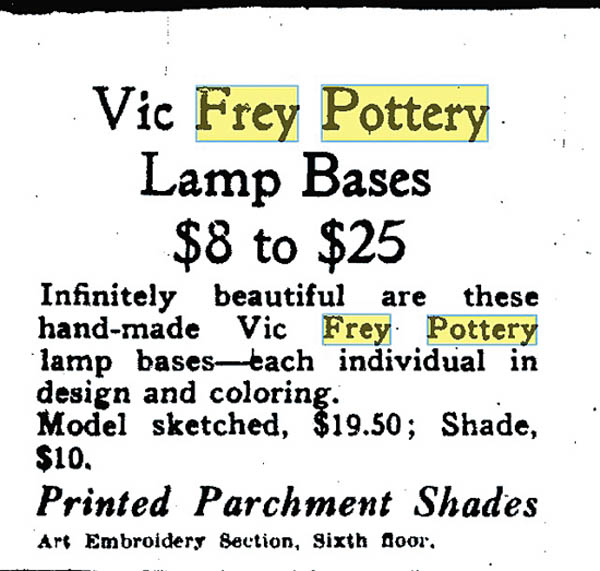
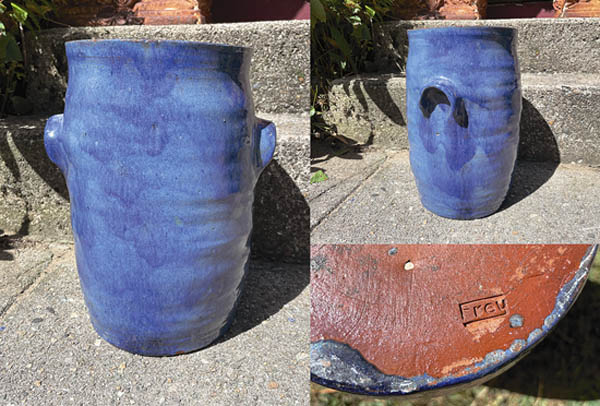

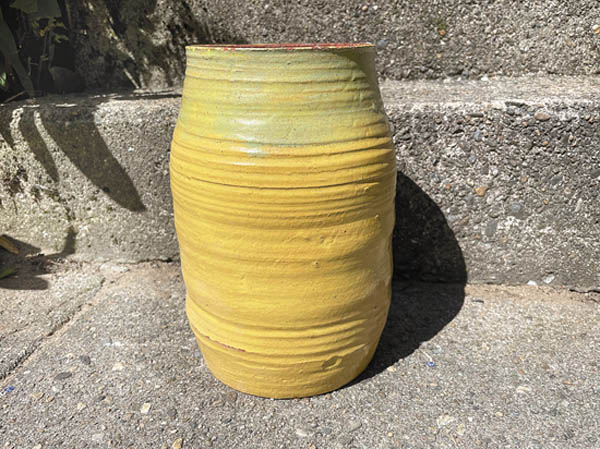
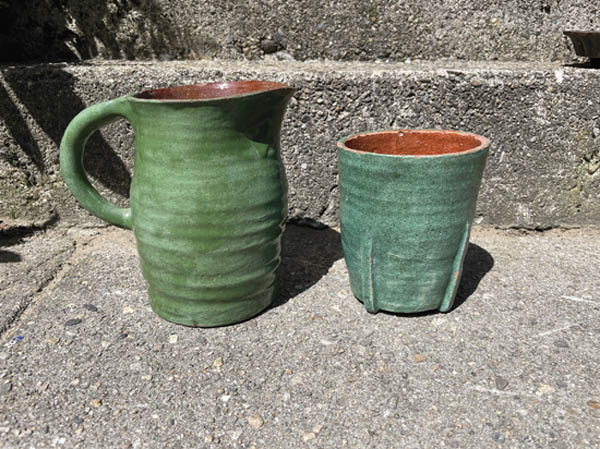
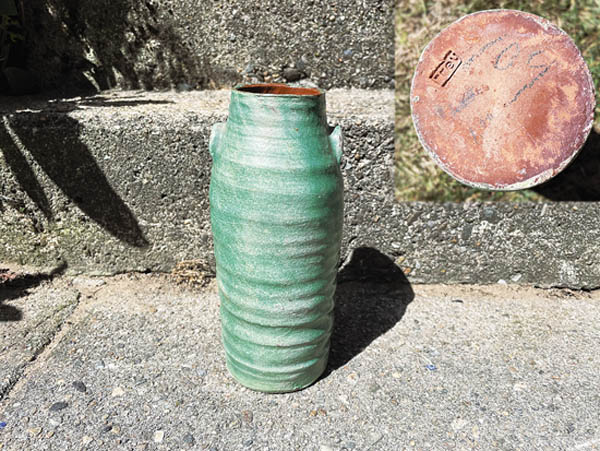

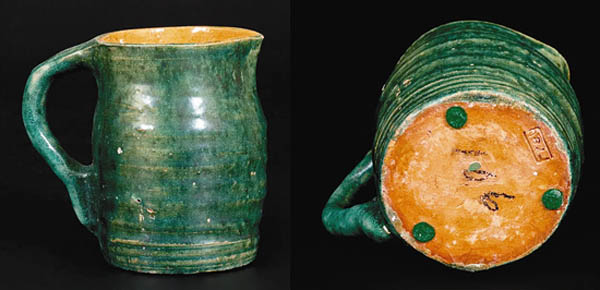

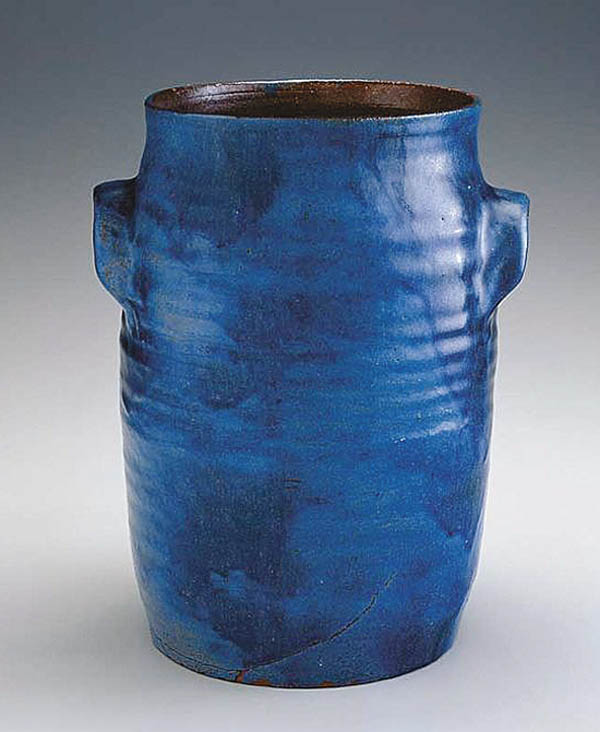

SHARE
PRINT